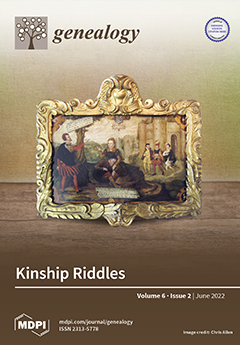Posted in Articles, Identity Development/Psychology, Media Archive, Social Science, United States on 2022-06-23 15:54Z by Steven |
Regimes beyond the One-Drop Rule: New Models of Multiracial Identity
Genealogy
Volume 6, Issue 2, (2022-06-20)
pages 57-80
DOI: 10.3390/genealogy6020057
Sarah Iverson, Ph.D. Candidate in Sociology
New York University
Ann Morning, Professor of Sociology
New York University
Aliya Saperstein, Associate Professor of Sociology; Benjamin Scott Crocker Professor in Human Biology
Stanford University, Stanford, California
Janet Xu, Postdoctoral Fellow
Inequality in America Initiative
Harvard University, Cambridge, Massachusetts
The racial classification of mixed-race people has often been presumed to follow hypo- or hyperdescent rules, where they were assigned to either their lower- or higher-status monoracial ancestor group. This simple framework, however, does not capture actual patterns of self-identification in contemporary societies with multiple racialized groups and numerous mixed-race combinations. Elaborating on previous concepts of multiracial classification regimes, we argue that two other theoretical models must be incorporated to describe and understand mixed-race identification today. One is “co-descent”, where multiracial individuals need not align with one single race or another, but rather be identified with or demonstrate characteristics that are a blend of their parental or ancestral races. The other is the “dominance” framework, a modern extension of the “one-drop” notion that posits that monoracial ancestries fall along a spectrum where some—the “supercessive”—are more likely to dominate mixed-race categorization, and others—the “recessive”—are likely to be dominated. Drawing on the Pew Research Center’s 2015 Survey of Multiracial Adults, we find declining evidence of hypo- and hyperdescent at work in the United States today, some support for a dominance structure that upends conventional expectations about a Black one-drop rule, and a rising regime of co-descent. In addition, we explore how regimes of mixed-race classification vary by racial ancestry combination, gender, generation of multiraciality, and the time period in which multiracial respondents or their mixed-race ancestors were born. These findings show that younger, first-generation multiracial Americans, especially those of partial Asian or Hispanic descent, have left hypo- and hyperdescent regimes behind—unlike other young people today whose mixed-race ancestry stems from further back in their family tree.



